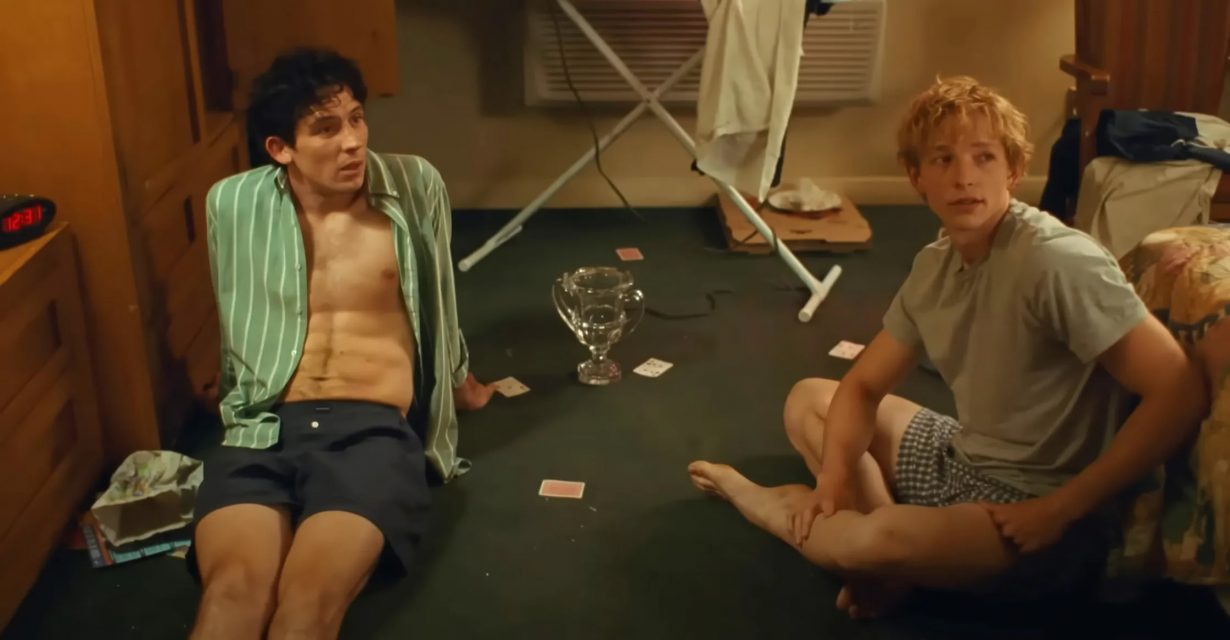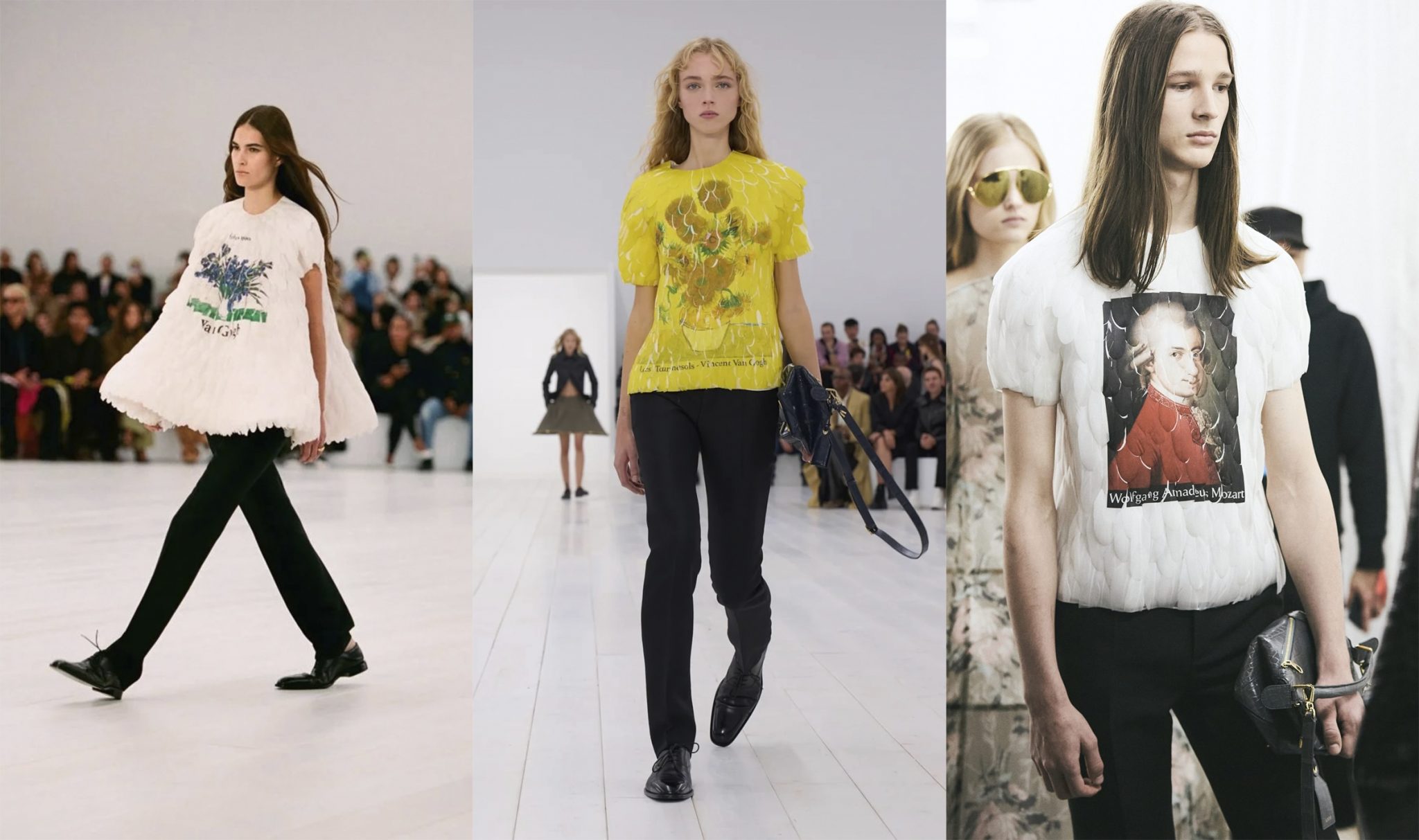The year in fashion: In 2024, taste is now acquired from so many sources that the only way for the industry to keep up is to infiltrate all areas of life
This year it was hot to be smart. Miu Miu set up kiosks in cities around the world giving away free copies of Sibilla Aleramo’s 1906 feminist novel A Woman and Alba De Céspedes’s Forbidden Notebook, a tale of domestic discontent in postwar Rome first published in 1952. Prada devised a phone line for its Autumn Winter 2024 campaign, where you could speak to Miranda July. Valentino sponsored the International Booker Prize ceremony. Burberry, always keen to lean into a celebration of national identity, sponsored the British pavilion at the Venice Biennale. Loewe printed Van Gogh paintings and Mozart portraits onto feathered tops. Model and actress Kaia Gerber’s newly inaugurated book club hosted conversations on novelists Virginie Despentes and Djuna Barnes (best-known for Nightwood, a cult lesbian classic released in 1936). Yves Saint Laurent set up a production arm and took Jacques Audiard’s Emilia Perez and David Cronenberg’s The Shroud to Cannes. The Met Gala plucked its theme – absurdly – from a J.G. Ballard short story about class warfare.

It was hot to be present: gasping at John Galliano’s macabre-nostalgia performance for the Margiela Artisanal show, staged at night under the Pont Alexandre III in Paris; ditching phones at The Row in favour of old-fashioned notebooks. It was hot to revive the past, celebrity sartorial power increasingly measured by access to iconic archival looks (Zendaya in robot-era Mugler, Kim Kardashian wearing Princess Di’s diamond cross). It was hot to be a heritage tomato, a lesbian, a cowgirl, a lesbian cowgirl, a lifesize doll. It was hot to be Charli XCX, who did more than any brand to shape the feel, and by extension the look, of 2024: a post-Balenciaga, post-Westwood, fur coat and fancy knickers mash-up of exposure, volume and semi-visible nipples. In the hottest summer on record, it was hot to be hot.
Though the fashion industry has always both rewarded and provoked cynicism, something about its current cycle feels particularly wearying. Everything scuds by on a screen, one ‘moment’ or microtrend swiftly supplanted by another. The pace is fast, the rewards sporadic, the artistry in low supply. For those working within it, dark clouds hover: independent brands are shuttering all over the unprofitable shop; E-comm is in a mess, with the collapse of once-shining examples like Matches. The vague optimism of the mid-to-late 2010s that drove pledges to sustainability and diversity has dimmed: labels are rolling back their climate commitments, going quiet on their diversity promises, and employing ever-thinner models. Some of this is industry-specific, much of it wider. Fashion as both a business and cultural barometer is always highly sensitive to shifting social tides and global instability (in its indifference as much as its actions – note the stark contrast between the industry’s support of Ukraine following Russia’s invasion, and its almost total silence on the horror of Israel’s genocide against Palestinians in Gaza.)

Once, we believed that this sensitivity meant that fashion absorbed, distorted, and eventually helped to determine the world around it; hems went up and down, clothes and shows and ads and editorials became funhouse mirrors that told us something interesting about an era’s priorities and anxieties. Designer, photographer, stylist – each role involved an element of sartorial soothsaying as they contextualised the present, recycled the past, and cut new paths forward. But if anything comes of raking through this year’s scattered fragments, it is the recognition that the imaginative power of these so-called trendsetters is firmly on the wane.
2024 has also been one long game of luxury musical chairs, with the creative directors at the big fashion ateliers swapping between the same fifteen or so roles. Rumours abound about who will next take the throne at Chanel, Dior and Fendi. Every label wants to be the hottest – digital retailer Lyst’s word of choice when it ranks them quarterly – but, like the film industry’s increasing reliance on existing IP (Barbie, the Marvel franchise, and countless remakes), fashion’s brand execs would rather take their chances with a known, bankable figurehead who will toe the line between familiarity and freshness. The effect is aesthetically deadening, with one brand coming to resemble another. Take Alessandro Michele, who left Gucci two years ago and was appointed creative director of Valentino in March 2024. His designs remain excellent, if you like that style of opulent junk-shop bricolage, but it means that 2024 Valentino looks a lot like 2022 Gucci.
Customers and followers of fashion don’t necessarily want more of the same, and a couple of daring houses have plucked creative directors from some degree of obscurity, like Sean McGirr at McQueen and Maximilian Davis at Ferragamo. But both of their rocky starts shows that the unknown can be dicey to invest in. Vision, if it’s there, requires time and trust, and offers too large a margin for error in a risk-averse age. In this respect, John Galliano’s Margiela show felt less like the dawn of a new era than the last gasp of a dying genre, a visitation from the ghosts of fashion past.

The odd maverick still manages to slip though. It was unsurprising to see Jonathan Anderson, the creative director of powerhouse LOEWE, who also owns eponymous brand JW Anderson, win Designer of the Year for the second year running at the 2024 Fashion Awards. He is one of the few creative directors to combine genuine, modern weirdness with extraordinary profitability for the LVMH overlords. But it is equally unsurprising to see that Anderson, who is tipped to head to Dior next, is also setting his sights elsewhere. This year his costume designs featured in two Luca Guadagnino films: Challengers and Queer. Last week he signed to United Talent Agency, making a pitch for himself as someone with wider, more creatively capacious influence.
In this respect, Anderson is doing as an individual what brands are doing en masse, which is to recognise the hard limits of fashion in 2024 and so cast the net wider. Labels are not the tastemakers they once were. In fact, taste is now acquired from so many sources that the only way to keep up is to position oneself not just as a purveyor of clothes or cosmetics but as a mascot of deeper cultural richness. The scale of fashion’s cultural engagement right now reads like a frantic land grab; an attempt to both justify and protect various brands’ continued existence by infiltrating more areas of life, extending the reach one Miu Miu bookmark at a time.

Fashion never stays still. This is why it is uniquely good at surviving; always moving with the times, even if moving feels like falling backwards or scuttling sideways. Angela Carter said as much in a 1967 essay, where she observed that ‘the fashion writers, the designers and models… live in the same cloud of unknowing as us all; they think they mould the public taste but really they’re blind puppets of a capricious goddess… whom the Elizabethans called Mutability.’ We may lament the goddess’s current methods of string-pulling, but we cannot deny the strength of her survival instinct. Right now, a deathly atmosphere hovers above fashion – not just thanks to its callousness towards the environment it harms and the humans it exploits, but because it feels like we are at the end of something. But an end is also an evolution, for better or worse. Where previously such morbidity might have been channelled back into the designs, as happened in the late 1990s with Alexander McQueen, Jean-Paul Gaultier, Olivier Theyskens and their peers, now the response is to protect the brand and its profit margins by any means necessary, even if that means fundamentally altering the foundations of what we understand fashion to be.
